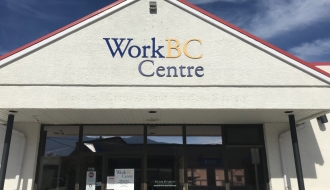Career Overview
Data entry clerks:
- Input coded, statistical, financial and other information into computerized databases, spreadsheets or other templates using a keyboard, mouse, optical scanner, speech recognition software or other data entry tools
- Work in the private and public sectors
Job Titles
Duties
Data entry clerks:
- Receive and register invoices, forms, records and other documents for data entry
- Input data into computerized databases, spreadsheets or other templates using a keyboard, mouse, optical scanner, speech recognition software or other data entry tools
- Import and/or export data between different kinds of software
- Check accuracy and completeness of data
- Identify, label and organize electronic storage media
- Maintain libraries of electronic storage media
Earnings
Earnings is income that workers receive in exchange for their labour. Depending on the type of employment, earnings can be in the form of wages (hourly), salaries (fixed monthly or annual) or self-employed earnings.
Work Environment
# Workers Employed
4,535% Employed Full Time
46%Work in this occupation is typically performed in a structured environment, such as an office, hospital or school.
Career Pathways
Promotion to senior positions is possible with experience.
Related Careers
Occupational Interests
It’s important to understand what kinds of occupations align with your interests.
For more about occupational interests visit Skills for the Future Workforce > Characteristics.
Here are the top occupational interest(s) for this career profile:
Education, Training and Skills
- Completion of secondary school may be required
- College or other courses in data entry may be required
Education programs in B.C.
The following program areas are related to this occupation:
- Business Administration/Management/Commerce

Skills
Every job calls for a certain set of skills. Knowing those skills is the first step in finding a good career fit.
Here, you will find the 10 most relevant workplace skills. Some are more important to achieving success in a certain career than others. These skills may come naturally to you or you may need to gain them through education, training and experience.
See the list of work-related skills below, ranked in order of importance for this career. Check out the list and see if this career matches your skills—take that first step!
Understanding written sentences and paragraphs in work-related documents.
Giving full attention to what other people are saying, taking time to understand the points being made, asking questions as appropriate, and not interrupting at inappropriate times.
Keeping track of and assessing your performance, other individuals, or organizations to make improvements or take corrective action.
Communicating effectively in writing as appropriate for the needs of the audience.
Managing one’s own time and the time of others.
Talking to others to share information effectively.
Using logic and reasoning to identify the strengths and weaknesses of alternative solutions, conclusions or approaches to problems.
Being able to solve novel, ill-defined problems in complex, real-world settings.
Understanding how new information could be used to solve current and future problems in making decisions.
Adjusting actions in relation to others' actions.
Labour Market Statistics
Discover data, facts and information that have been gathered and analyzed. Learn about the characteristics of the economy and labour market in B.C.
Employment
Find out about employment types and trends by region and industry.
Employment
4,535Employment by Region







| Region | Employment | % Employment of this Occupation |
|---|---|---|
| Cariboo | 170 | 3.7% |
| Kootenay | 90 | 2.0% |
| Mainland/Southwest | 2,950 | 65.0% |
| North Coast and Nechako | 80 | 1.8% |
| Northeast | 55 | 1.2% |
| Thompson-Okanagan | 505 | 11.1% |
| Vancouver Island/Coast | 690 | 15.2% |
Labour Market Outlook
The B.C. Labour Market Outlook is a 10-year forecast of the expected supply and demand for labour in the province. It’s usually updated every year. The purpose is to provide British Columbians with the knowledge to make informed decisions on careers, skills training, education and hiring.
Forecasted Job Openings (2024-2034)
1,270Forecasted Job Openings
Forecasted Employment Growth Rate
Composition of Job Openings
Job Openings by Region (2024-2034)







| Region | Job Openings | Avg. Annual Employment Growth |
|---|---|---|
| Cariboo | 40 | -0.7% |
| Kootenay | 20 | -0.9% |
| Mainland/Southwest | 860 | 0.5% |
| North Coast and Nechako | 0 | -2.3% |
| Northeast | 20 | 1.5% |
| Thompson-Okanagan | 140 | -0.3% |
| Vancouver Island/Coast | 190 | 0.0% |
Industry Highlights
Learn about the opportunities in B.C.'s major industries, including employment trends, earning potential, locations of work and more.
Forecasted Job Openings by Industry
| Industry | Job Openings (2024-2034) |
|---|---|
| Health Care and Social Assistance | 280 |
| Professional, Scientific and Technical Services | 210 |
| Finance, Insurance and Real Estate | 130 |
| Public Administration | 130 |
| Retail Trade | 120 |
Resources
Resource information is currently not available.







